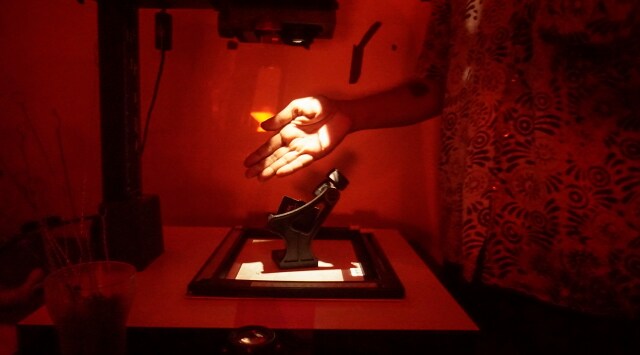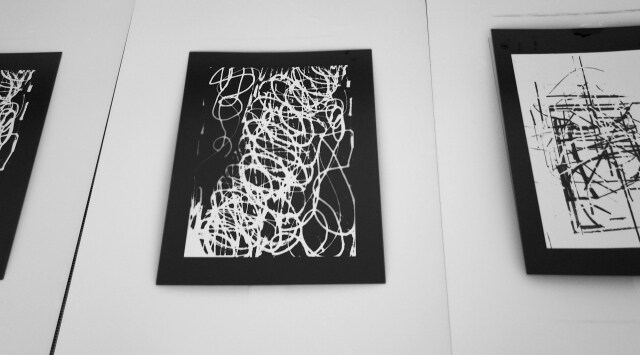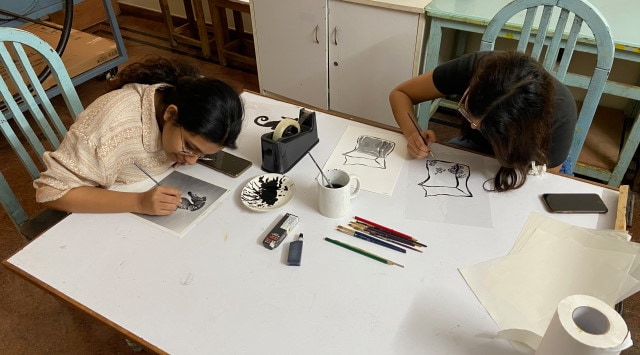One can’t be sure if there are even silver linings to be spotted in these times of the pandemic and pandemonium. But one could hazard the opportunities to pause, slow down and reflect might be some of the few positives that emerged – if we were forced to come up with answers at all. It is grasping on this tiny little sliver that has allowed many to discover their world anew, or return to an older, simpler time. Photographers and printmakers, it seems, have gone back to historic processes to turn their negatives into positives. Delhi-based photographer Srinivas Kuruganti – backed by Rahaab Allana of the Alkazi Foundation and the MurthyNayak Foundation – has been spearheading The Analogue Approach Project at a darkroom at the Delhi neighbourhood of Shahpur Jat since June of last year. “The idea started off as a research project and was intended to bring people from outside of the country, from Sri Lanka, Bangladesh and Nepal, and have them work in a dark room,” he explains. As well as interview them and create an accompanying document of these photographers’ practice, but they had to adapt to the situation and keep it local by shifting their focus onto other Delhi-based photographers. Srinivas’ interest in darkroom development isn’t trendy at all, rather he has been shooting on film for over three decades and speaks fondly of “the tones, textures, the whites, blacks and creams" of a really good print made in a non-digital way. [caption id=“attachment_9456761” align=“alignnone” width=“640”]  The Analogue Approach Project.[/caption] [caption id=“attachment_9456771” align=“alignnone” width=“640”]  The Analogue Approach Project.[/caption] But it isn’t just doing something with one’s hands, the challenge of balancing the chemicals and conditions, the learning curve of repeated action, and the child-like thrill of seeing the image emerge on blank paper that’s calling people back to these processes. It is the essential shift in approach to the practice of photography itself necessitated by these historic processes that has been the bigger draw. “It slows you down, and you actually have to wait for the image because you don’t see it right away and so the expectation of what might be there is really beautiful,” Srinivas offers as a snippet of the experience of shooting on film. Aparna Nori, a Bengaluru-based photographer pinned it down to the word “mindful”. “My breathing changes when I’m shooting on film versus digital. I’m aware that I’m breathing out at the moment of pressing the shutter and such. These might be very small things but important things,” she elaborates. Aparna is the most recent member of Kanike Studios, which started in November 2019 as shared artist studios for photographers by practitioners Indu Anthony, Vivek Muthuramalingam and Krishanu Chatterjee. But after taking a few months to set up a dark room and settle in, host their first workshop and exhibition of salted paper prints, they went into lockdown like everybody else. They have recently restarted workshops following present safety protocols; Aparna led their latest cyanotype workshop, a photographic printing process that mixes ferric ammonium citrate and potassium ferricyanide to create cyan-blue prints. “Mistakes in this particular process tend to be playful,” she explains as her affinity to cyanotype. But in general: “it is the tactile nature of these processes, the thrill and the lack of intervention of a machine,” that keeps Aparna coming back to these techniques. [caption id=“attachment_9456781” align=“alignnone” width=“640”]  At Kanike Studios.[/caption] [caption id=“attachment_9456791” align=“alignnone” width=“640”]  At Kanike Studios.[/caption] Kanike Studios started off as a space to explore other historic photographic printing processes after Vivek Muthuramalingam missed the “rumination, thoughtfulness and discipline” afforded by shooting on film and printing them. He had been long looking at opportunities to return from the “quick turnaround afforded by the digital medium”. He had already been doing darkroom development and added attending residencies like at Goa Centre for Alternative Photography eight years ago, where he focussed on salted paper printing prompted by his proximity to the sea. Two years ago, he spent two weeks at Studio Goppo learning the wet plate process known as an ambrotype. But it was the joy of having a studio “in which you could do laps on your cycle” as a part of his artist residency at The White Box in Munich that was the final push to start up Kanike Studios with the other photographers. Private intention turning into a public institution has been the story of the Atelier Prati too. Jayasimha Chandrashekar, the founder of this Bengaluru-based printmaking studio, noticed that besides private spaces and expensive out-of-town options, printing was a completely digital affair. Along with his mentor S Basavachar, they tinkered and designed their own affordable etching press (which are available for sale as well). This was their first step in making old-school printing processes more accessible. And Atelier Prati is the continuation of this motivation. “We’ve managed to get two 19th century lithographic presses that were used by the East India Company, and now can offer all methods of non-digital printmaking,” he says, listing off “relief, intaglio and screenprinting” as the other options. [caption id=“attachment_9456811” align=“alignnone” width=“640”]  At Atelier Prati.[/caption] [caption id=“attachment_9456841” align=“alignnone” width=“640”]  At Atelier Prati.[/caption] Jayasimha speaks of printmaking with a particular passion. “You are in control, completely in-charge of each of the steps and present in each of them – and these techniques expand the idea of time,” he explains. “There’s also physical satisfaction and pleasure to printing that goes beyond just pressing ctrl-P on a keyboard,” he adds. Jayasimha finds that workshop participants lean into “engaging with the materials” but also “the building of a repository of experiences” that lead to a better print each time is exciting. Besides hosting workshops at the studio, Jayasimha is open to helping – even those challenged by the distance to the space – to navigate the vendors, systems and access to materials through dialogue in order to see printmaking “sprout like mushrooms” across the city and country. Maybe the Blues guitar god BB King got it wrong, the thrill isn’t gone, it can still be coaxed back. “To see an image come out of the paper is still beautiful and still fascinates me even after all of these years. I know, it sounds kind of hokey to say it that way, but it is true,” Srinivas admits. “And I see this with students in the darkroom too, they get excited when it happens because they’ve never seen it before. It is because we always assume the file is there on the drive somewhere. One doesn’t even question how an image is made in a digital camera but in a darkroom you actually witness the image develop,” he explains. And this thrill will always be new to so many of us. All images provided by the author.
Rumination, thoughtfulness and discipline.
Advertisement
End of Article


)
)
)
)
)
)
)
)
)



